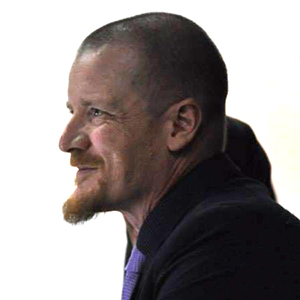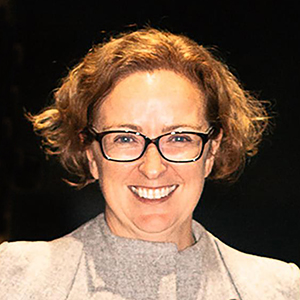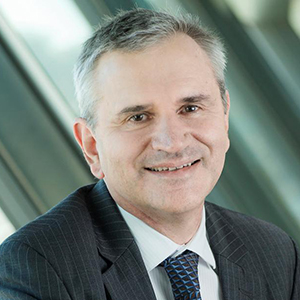Spying the Manhattan skyline for the first time – by land, air or sea – is as overwhelming as it is beautiful. The impact of those majestic skyscrapers is dwarfed only by the palpable energy emanating from the streets. New York City doesn’t have the reputation as one of the cultural capitals of the world for nothing.
There are many city skylines around the world that are instantly recognisable. The majestic claustrophobia of New York City skyscrapers; the ancient ruins and basilicas of Rome; the stark contrast of London’s contemporary and historical edifices; Dubai’s marvels of modern technology; Sydney Opera House’s billowing beauty on the harbour – all elicit cultural and emotional connections in their environments.
It is no surprise that these cities are some of the most visited and culturally celebrated places in the world. When we think of world-renowned urban spaces and seminal cultural hubs, more often than not, they exist alongside icons of architecture.
 Urban geographer and Program Director of UniSA’s Bachelor of Urban & Regional Planning, Dr Matthew Rofe, says a city’s flagship urban spaces play a pivotal role in the formation of a city’s distinctive character and the cultural resonance that attracts visitors.
Urban geographer and Program Director of UniSA’s Bachelor of Urban & Regional Planning, Dr Matthew Rofe, says a city’s flagship urban spaces play a pivotal role in the formation of a city’s distinctive character and the cultural resonance that attracts visitors.
“Flagship urban design or signature architecture can make a great difference, certainly in the importance of having something which is emblematic and unique,” he says.
“From a design point of view, cities around the world are locked in competition and are always seeking to attract external investment in whatever form that may be. Tourism is a form of external investment and cities are seeking to create something which is a unique place identity that can form a part of their unique market proposition.
“Governments realise that investment in these types of projects is very significant, so they need to be more than an icon about a place, they also have to be functioning spaces within that place.”
Functional flagship urban design spaces litter the island of Manhattan in New York. A trip to Times Square is a blood pumping exercise not for the faint of heart; the serene oasis of Central Park is a beautiful escape from the scores of people that hit the pavement every day; the string of museums along Fifth Avenue and Central Park – dubbed Museum Mile – is a lesson in cultural astuteness and acumen.
Nestled between Central Park and the “old money” brownstones of the Upper East Side is the Guggenheim Museum, a cylindrical structure of modern architecture that polarised architects and residents alike, jeopardising the conservatism and prestige of its urban landscape when first proposed.
Almost a century on from its first unveiling, however, the structure has become one of the most celebrated cultural landmarks in the city and continues its legacy as not only a world-renowned art museum, but also a stunning feat of architecture.
The extent to which the Guggenheim Museum as a feature of signature architecture, or ‘starchitecture’, has directly contributed to New York’s cultural gravitas is hard to quantify.
“[Flagship urban design] is very important, but it’s sometimes hard to separate,” Dr Rofe says.
“If you get a piece of iconic architectural design in say New York, as New York is one of the world’s premier global cities, it is an absolute major hub for tourism and business, so how do you actually separate out the positive contribution of a single design artefact with the entire economy that functions around it?”
However, the Guggenheim Museum in Bilbao in Northern Spain is a different story.
Funded in part by the Solomon R. Guggenheim Foundation that established successful museums in the cultural hubs of New York and Venice, the organisation took a great risk in ‘starchitect’ Frank Gehry in 1997 to invigorate the dilapidated industrial city in northern Spain.
The New York Guggenheim’s sister museum in Bilbao not only shares its art collections, but also the strikingly contemporary modern and loud architectural design that is in stark contrast to its traditional environment.
 UniSA lecturer in tourism management, Dr Chris Krolikowski, says that having such a stark contrast and culturally important functional urban design space in Bilbao was key to bringing people to the area, transforming it from an industrial wasteland.
UniSA lecturer in tourism management, Dr Chris Krolikowski, says that having such a stark contrast and culturally important functional urban design space in Bilbao was key to bringing people to the area, transforming it from an industrial wasteland.
“If you look at Bilbao, it was kind of a neglected town which was suffering from terrorist activity and de-industrialisation. It was not on the tourist map in Europe at all,” he says.
“Having that shocking piece of architecture along with the artwork [housed in the Guggenheim] created an amazing contrast. There was this city, on the periphery of Europe, which was declining and forgotten and then here comes this shining jewel.
“Despite the ongoing debate regarding the appropriateness of the Guggenheim Museum to its settings, there is no doubt that the development has firmly placed Bilbao on the map of global tourism destinations.”
Design needs to be part of something bigger
The construction of the Guggenheim Museum in Bilbao was part of a large-scale plan for urban renewal and revitalisation that is still felt today, with the creation of almost 10,000 jobs and a thriving culture and art scene.
Twenty years after it first opened its doors to the public, Bilbao still receives more than one million visitors a year, establishing itself as a bona fide international tourist attraction.
Closer to home, many draw comparisons between Bilbao and the establishment of the Museum of Old and New Art (Mona) in Tasmania. Dr Krolikowski says both flagship urban architecture feats reinvigorated their respective cities.
“The contrasting environments definitely worked really well for Bilbao, but it also worked for Hobart with Mona and that very similar type of principle of contrasting what was there before and what was created through that development,” he says.
“It is really important in terms of both developments to think how the new piece of architecture, that new attraction, allows the local people to reimagine their city and to imagine themselves.
“People were talking about Mona and how it’s changed their lives. Small business owners were taking more risks – there was a guy who converted an old car and put a coffee machine in it – suddenly things that were previously not seen as acceptable were different because you had that cultural shift that redefined previous conceptions of the place.”
Dr Krolikowski says that when developing tourism attractions, it is vital to consider not only the contrasting elements but also the fit with the local community and its culture.
“Ultimately, most tourists want to experience attractions and destinations that represent authentic aspects of the local community,” he says.
“Finding the right balance between global trends and unique local cultural and design aspects of the destination is crucial.”
South Australia is also feeling the ripples of the ‘Bilbao effect’ – albeit on a much smaller scale – in that more risks are being taken in terms of flagship urban spaces. Particularly in Adelaide, stereotypes are being challenged and established environments are being adapted to create visually stunning and culturally significant experiences in a city that has been traditionally viewed as conservative.
South Australia has its own drawcards
McLaren Vale’s own take on Mona, the d’Arenberg Cube, has brought in more people to the area than ever before; SAMRHI’s “cheese grater” building is simultaneously a striking and controversial ambitious architectural accomplishment; and the revitalisation of the West End as an art, food and cultural hub is a welcome change in Adelaide’s CBD.
The chief executive officer of the peak body for South Australia’s tourism industry, the South Australian Tourism Industry Council (SATIC), Shaun de Bruyn, says the idea that you can build an icon that will attract people, as with Mona in Hobart, can work, provided you understand and cater to the interests of your target market.
“The d’Arenberg Cube is a good example – it’s increasingly recognised at a state and national level,” de Bruyn says.
“Another example is the South Australian Museum, as part of the cultural boulevard of North Terrace. The museum has the largest Indigenous artefact collection in the world. The museum has more than 700,000 visitors a year, 20 per cent of whom are international visitors – that is huge.
“Having these key pieces of infrastructure that are part of a distinctively South Australian cultural experience, is really the key.”
UniSA has developed its own functional flagship urban spaces to create places with meaning and cultural significance including the Jeffrey Smart Building, the refurbishment of the Business School’s Yungondi Building, and Pridham Hall.
And standing high in Adelaide’s health and biomedical precinct is UniSA’s Cancer Research Institute on North Terrace, housing the University’s new future focused museum, MOD. – one of the most ambitious gallery and cultural spaces Adelaide has seen.
 MOD. Director Dr Kristin Alford says that galleries and museums help tell the stories of a city and its inhabitants, as it is a place to showcase local research and innovation, by talented people, by sharing those stories with wider audiences.
MOD. Director Dr Kristin Alford says that galleries and museums help tell the stories of a city and its inhabitants, as it is a place to showcase local research and innovation, by talented people, by sharing those stories with wider audiences.
“We are receiving a lot of visitor feedback where people are saying, ‘I wouldn’t have expected to find this in Adelaide’ or ‘this is really great for Adelaide’,” Dr Alford says.
“I think our visitors are motivated by seeing something that pushes the boundaries and helps them rethink their image of the city as somewhere that’s innovative and prepared to be bold and take risks.
“It’s a rare city that draws visitors in on the strength of one gallery or museum, but they certainly add to the experience and provide a window for visitors into the types of stories and experiences that the city values.
“By inspiring young people about the future it may encourage them to pursue study and create careers here in Adelaide. It creates a drawcard to the West End and encourages exploration of the new developing biomedical and creative precincts.”
MOD. benefits from its proximity to the revitalised West End, complementing the precinct and acting as an additional drawcard, not just for visitors but for locals as well.
Over the past decades, New York’s Guggenheim and Bilbao’s art scene have become enshrined in the cultural appeal of those cities in a similar way.
Enticing visitors with a range of distinctive attractions
 Dean of Research and Innovation at UniSA’s Business School, Professor Andrew Beer, says while visually striking, singular architectural icons are not sustainable. What makes a place a cultural hub is its surrounding area – functional urban flagship design.
Dean of Research and Innovation at UniSA’s Business School, Professor Andrew Beer, says while visually striking, singular architectural icons are not sustainable. What makes a place a cultural hub is its surrounding area – functional urban flagship design.
“So often the single spectacular monument can be spectacularly unsuccessful. What’s more likely to be successful is an approach that offers a variety of different assets to tourists over an extended period,” he says.
“If you think about Hobart – their tourism is going so well they’re worried about drowning in success. But that’s not just Mona – it’s also its wilderness, its unique fauna, its scenic seascapes, its unique offerings in terms of quality of life, topography, climate etc.
“All of which are incredibly attractive to that particular market that seems to be flooding there at the moment – to one of the most pristine environments on the planet.”
Dr Rofe echoes this sentiment. He says that while the Sydney Opera House may be the most celebrated and recognisable icon in Sydney’s skyline, how people interact with the space and all of the surrounding landmarks, makes the difference.
“It’s a very successful area, so the icon can attract people, but the way the landscape around it is designed, linking it together, works very well.
“You’ve got the Botanic Gardens, Mrs Macquarie’s Chair, the Art Gallery of NSW, you can see the Opera House, the panorama of the Harbour Bridge, and there’s the promenade around Circular Quay across to The Rocks, the historic area, so it is a multi-functional landscape.
“Design has to function in a whole range of ways and in doing this it creates places of significance and meaning for people.”
Shaun de Bruyn from the South Australian Tourism Industry Council agrees that iconic buildings and structures are only ever part of the story – he says it’s the experiences you can have in those places that really counts.
“We have some amazing experiences in South Australia, some you can’t have anywhere else,” he says.
“Adelaide Oval is a world class piece of infrastructure but it’s about more than infrastructure or buildings – it’s the quality of experience that goes with them.”
De Bruyn, who’s part of UniSA’s Centre for Tourism and Leisure Management Industry Advisory Group, says like Hobart, Adelaide has a really strong range of distinctively South Australian experiences to offer visitors.
“We are an amazing global destination – Adelaide is a boutique city experience.
“It’s a modern, progressive city with all the conveniences yet the city is just 30 minutes from swimming with dolphins, 30 minutes from cuddling a koala, 60 minutes from 200 cellar doors – all these amazing experiences.
“You can taste 100-year-old port directly from the barrel at Seppeltsfield winery; dive with sharks near Port Lincoln; traverse the world’s largest single exposure of limestone bedrock on the Nullarbor Plain.
“We are very blessed as a state. We live in a fantastic city with lots to be proud about.”
So perhaps the idea of a city building its success and cultural capital on a single star attraction is misguided. You need a cast of stars – even if one or two get all the initial attention – and they need to fit together into a compelling storyline with a distinctive local flavour.